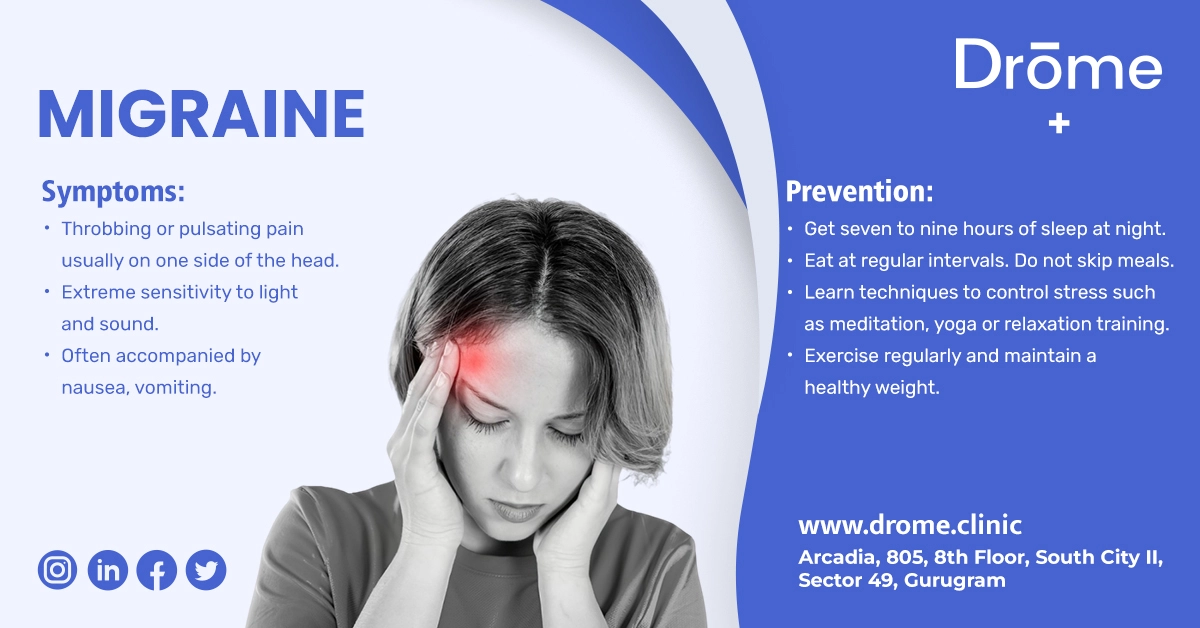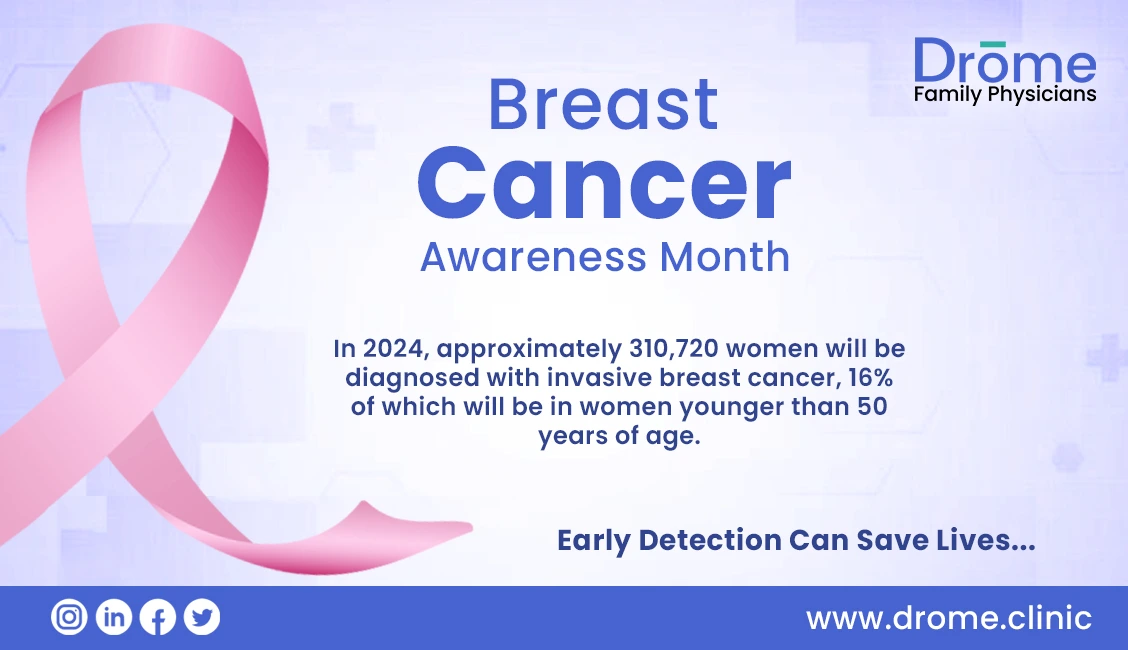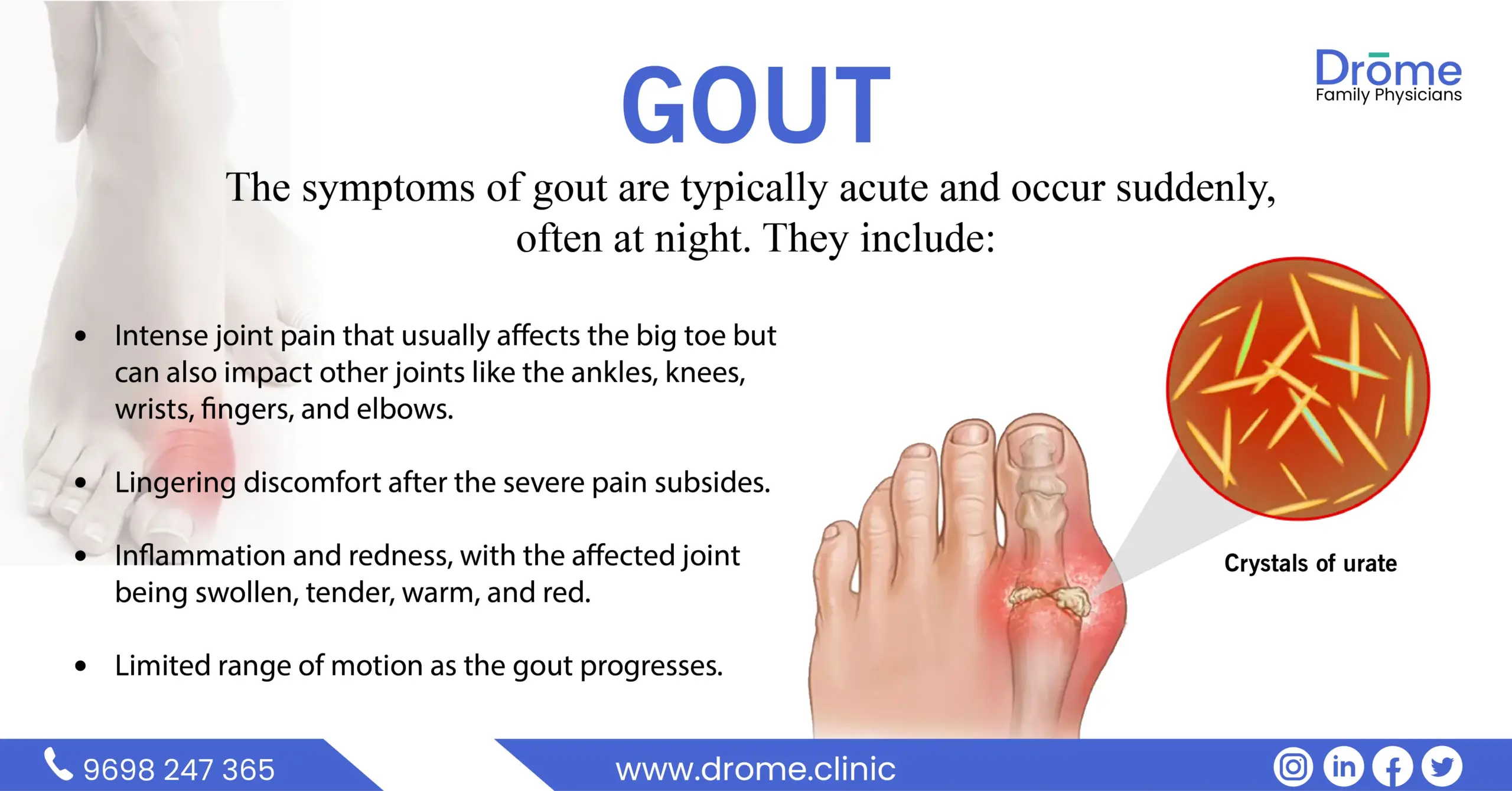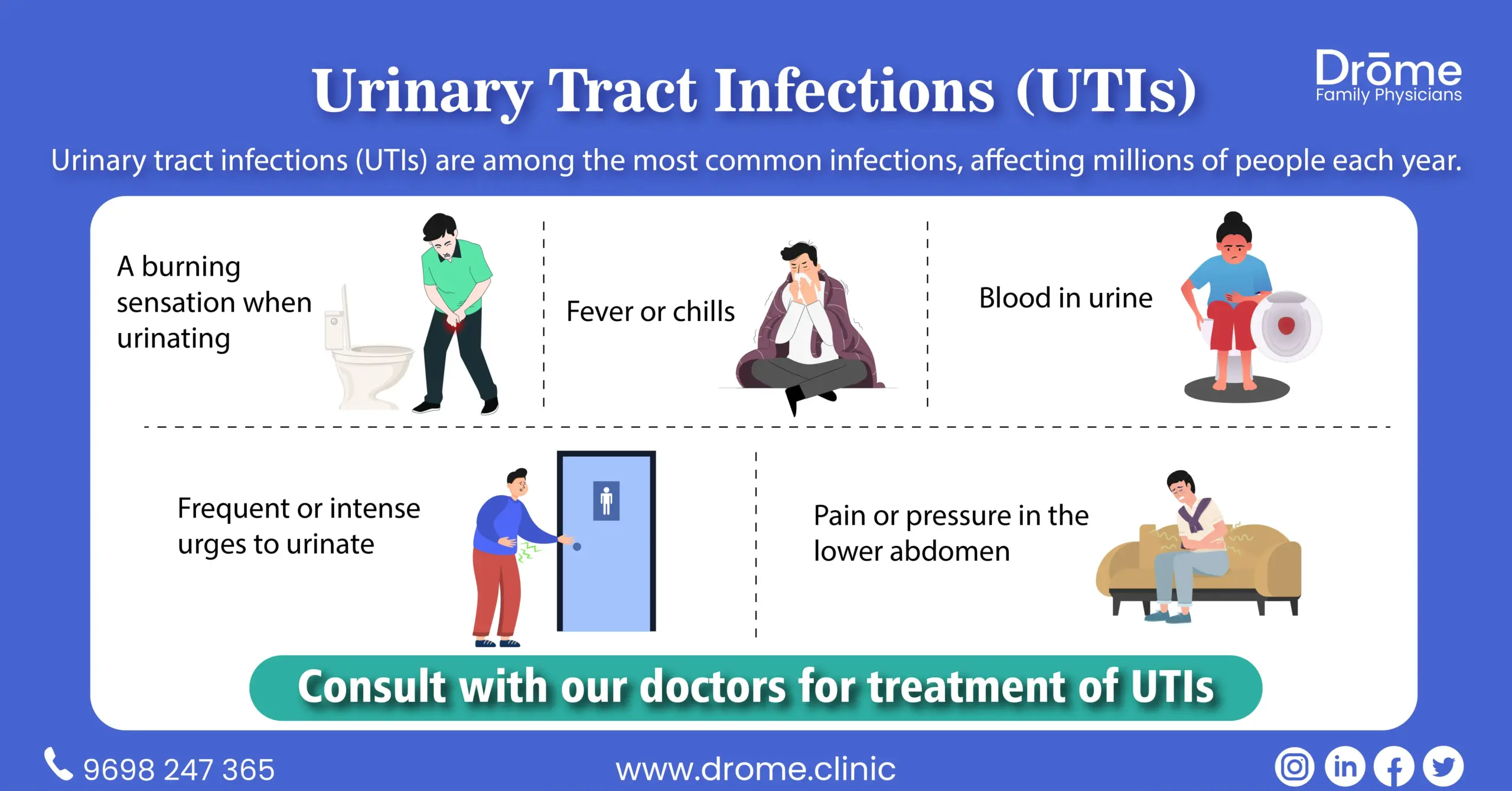Table of Contents
ToggleNavigating through migraines isn’t just about treating pain; it’s about tuning into our body’s needs and finding balance in our well-being.
Migraine Headache – Introduction
In India, where bustling lifestyles and diverse environmental factors converge, migraine remains a prevalent health challenge. This blog is dedicated to demystifying migraine, offering insights into its nature, impact and management strategies, aiding sufferers in navigating this condition with informed ease.
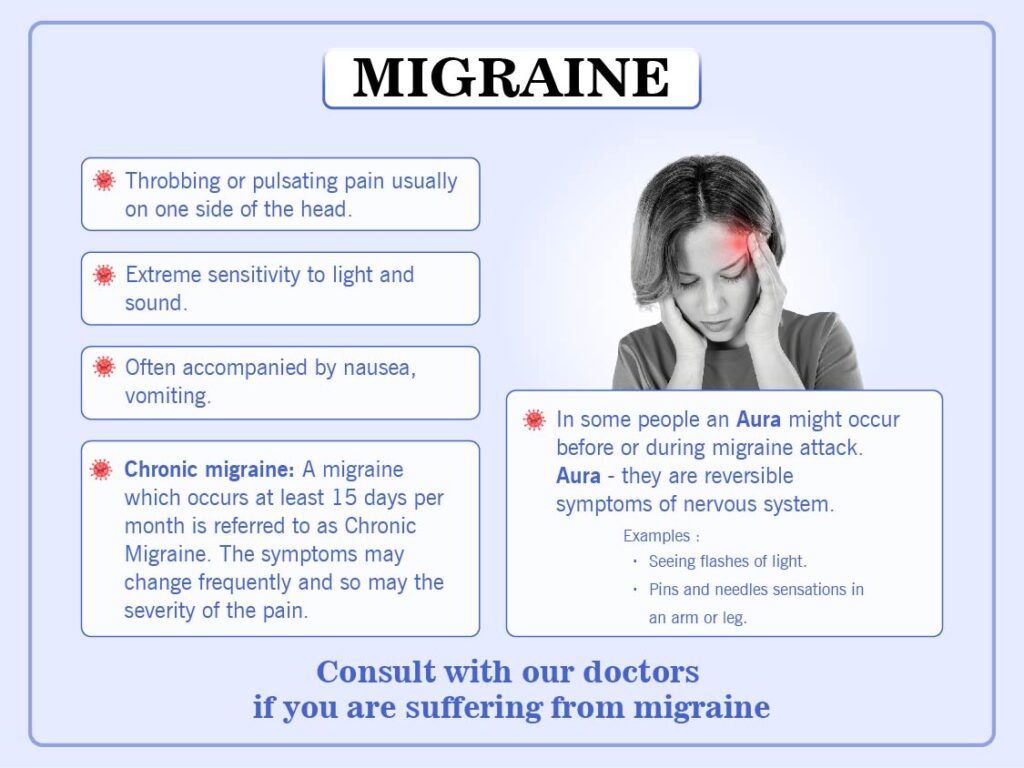
Migraine Headache – Introduction
Migraine is a type of headache which is often experienced as a throbbing or pulsating pain, usually on one side of the head. Unlike regular headaches, migraines are often accompanied by nausea, vomiting and extreme sensitivity to light and sound.
Aura
In some people, an aura might occur before or during migraine attacks. Auras are reversible symptoms of the nervous system. They are usually visual but can also include other disturbances. An aura can last from 10 to 60 minutes.About 15% to 20% of people who experience migraines have auras.Examples of migraine auras include:
- Visual phenomena, such as seeing various shapes, bright spots or flashes of light.
- Temporary Vision loss.
- Pins and needles sensations in an arm or leg.
- Weakness or numbness in the face or one side of the body.
- Difficulty speaking.
Types of Migraines
There are several types of migraines:
- Migraine with aura (complicated migraine): Around 15% to 20% of people with migraine headaches experience an aura.
- Migraine without aura (common migraine): This type of migraine headache strikes without the warning an aura may give you. The symptoms are the same, but that phase doesn’t happen.
- Migraine without head pain: Also known as “Silent migraine” or “acephalgic migraine,” .It includes the aura symptom but not the headache that typically follows.
- Hemiplegic Migraine: There is temporary paralysis (hemiplegia) or neurological or sensory changes on one side of the body. The onset of the headache may be associated with temporary numbness, extreme weakness on one side of body, a tingling sensation, a loss of sensation and dizziness or vision changes.
- Retinal Migraine (ocular Migraine): There may be temporary, partial or complete loss of vision in one of the eyes, along with a dull ache behind the eye that may spread to the rest of the head. That vision loss may last a minute, or as long as months.
- Chronic Migraine: A migraine which occurs at least 15 days per month is referred to as Chronic Migraine. The symptoms may change frequently, and so may the severity of the pain.
- Migraine with brainstem aura: It causes vertigo, slurred speech, double vision or loss of balance, (which occur before the headache). The headache pain may affect the back of head.
- Status Migrainosus. This is a rare and severe type of migraine that can last longer than 72 hours.
Phases of a Migraine
1. Prodrome Phase: Occurs hours or days before the headache. Symptoms include mood changes,
- Food cravings,
- Neck stiffness,
- Increased urination and
- Frequent yawning.
2.Aura Phase: Affects around one-third of migraine sufferers. Involves visual and sensory symptoms that precede or occur during migraines.
3.Attack Phase: The peak phase, where the actual migraine pain occurs. This can last anywhere from 4 hours to three days.
4.Postdrome Phase: After the headache subsides, the individual may feel exhausted, confused or washed out for upto a day.
Causes of Migraine
The exact cause of migraines is unknown. Genetics and environmental factors appear to play a role.
Triggers of Migraine can include :
1. Hormonal changes in females-Fluctuations in estrogen, such as before or during menstrual periods, pregnancy and menopause, seem to trigger headaches in many women.
2. Stress
3. Certain foods-aged cheeses and salty and processed foods might trigger migraines.
4. Sensory stimuli:bright or flashing lights can induce migraines, as can loud sounds.
5. Irregular sleep.
Symptoms, Diagnosis and Treatment:
Symptoms: Include severe headache, nausea, vomiting, light sensitivity, sound sensitivity, and sometimes, aura.
Diagnosis
Diagnosis is primarily clinical, based on symptoms, medical history and a neurological examination. Tests may be conducted to rule out other causes of headaches.
Treatment
Migraine treatment is aimed at stopping symptoms and preventing future attacks. Medications used to combat migraines fall into two broad categories:
- Pain-relieving medications. Also known as acute or abortive treatment, these medicines are taken during migraine attacks and are designed to stop symptoms.The main ingredients in pain relieving medications are aspirin, acetaminophen,ibuprofen and caffeine.
- Preventive medications. These medicines are taken regularly, often daily, to reduce the severity or frequency of migraines.These include beta-blockers, antidepressants and anti-seizure medicines.
The treatment choices depend on the frequency and severity of the headaches, whether there is nausea and vomiting with headaches, how disabling the headaches are and other medical conditions you have.
Prevention:
Lifestyle Changes: Regular physical activity, stress reduction and avoiding trigger foods.
Medication: Preventive medications can be prescribed for those with frequent or severe migraines.
Regular Sleep: Maintaining a regular sleep schedule can help prevent migraines.
Drink plenty of fluids: Staying hydrated, particularly with water, might help.
Keep a headache diary: Recording your symptoms in a headache diary will help you learn more about what triggers your migraines and what treatment is most effective.
Conclusion
Migraine can be a challenging condition, but with proper understanding and management, its impact on daily life can be significantly reduced. Recognizing triggers, seeking appropriate medical care and making suitable lifestyle changes are key steps in managing migraines effectively.
FAQs on Migraine
Can children and teenagers suffer from migraines?
Yes, migraines can affect individuals of all ages, including children and teenagers.
Are migraines just bad headaches?
No, migraines are a neurological condition that involves much more than just severe headaches, including symptoms like nausea and sensitivity to stimuli.
Is there a permanent cure for migraines?
Currently, there is no cure for migraines, but they can be managed effectively with the right treatment and lifestyle changes.
Can migraines be triggered by certain foods?
Yes, certain foods and additives, like aged cheeses and processed foods can trigger migraines in some individuals.

